|
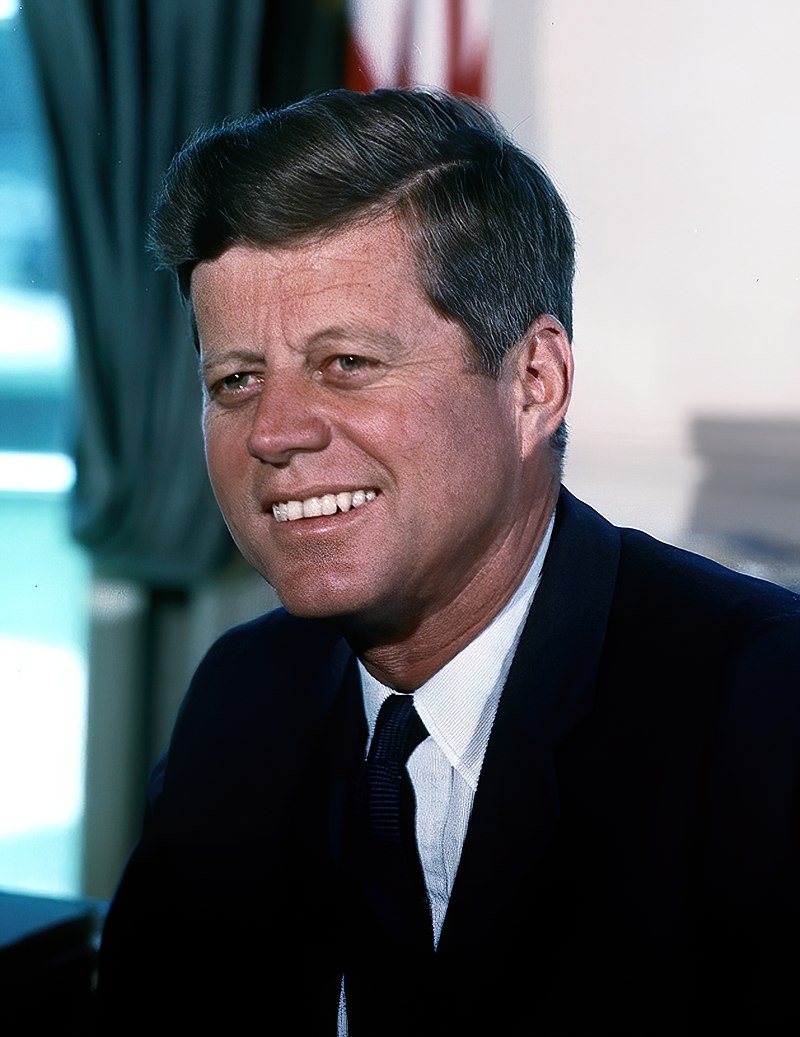
President
John F. Kennedy - Assassinated in 1963, Dallas, Texas
Kennedy was assassinated in Dallas at 12:30 p.m. Central Standard Time on November 22, 1963. He was in Texas on a political trip to smooth over frictions in the Democratic Party between liberals Ralph Yarborough and Don Yarborough (no relation) and conservative John Connally. Traveling in a presidential motorcade through Dealey Plaza, he was shot once in the back, the bullet exiting via his throat, and once in the head.
Kennedy was taken to Parkland Hospital, where he was pronounced dead 30 minutes later, at 1:00 p.m. He was 46 years old. Lee Harvey Oswald was arrested for the murder of police officer J. D. Tippit and was subsequently charged with Kennedy's assassination. He denied shooting anyone, claiming he was a
patsy, and was shot dead by Jack Ruby on November 24, before he could be prosecuted. Ruby was arrested and convicted for the murder of Oswald. Ruby successfully appealed his conviction but died of
cancer on January 3, 1967, while the date for his new trial was being set.
President Johnson quickly issued an executive order to create the Warren Commission - chaired by Chief Justice Earl Warren — to investigate the assassination. The commission concluded that Oswald acted alone in killing Kennedy and that Oswald was not part of any conspiracy. These conclusions are disputed by many. A Gallup Poll in November 2013 showed 61% believed in a conspiracy, and only 30% thought that Oswald did it alone. In 1979, the U.S. House Select Committee on Assassinations concluded, with one third of the committee dissenting, "that Kennedy was probably assassinated as a result of a conspiracy." The committee was unable to identify the other gunmen or the extent of the conspiracy. This conclusion was based largely on audio recordings of the shooting. Subsequently, investigative reports from the FBI and a specially appointed National Academy of Sciences Committee determined that "reliable acoustic data do not support a conclusion that there was a second gunman." The Justice Department concluded "that no persuasive evidence can be identified to support the theory of a conspiracy".
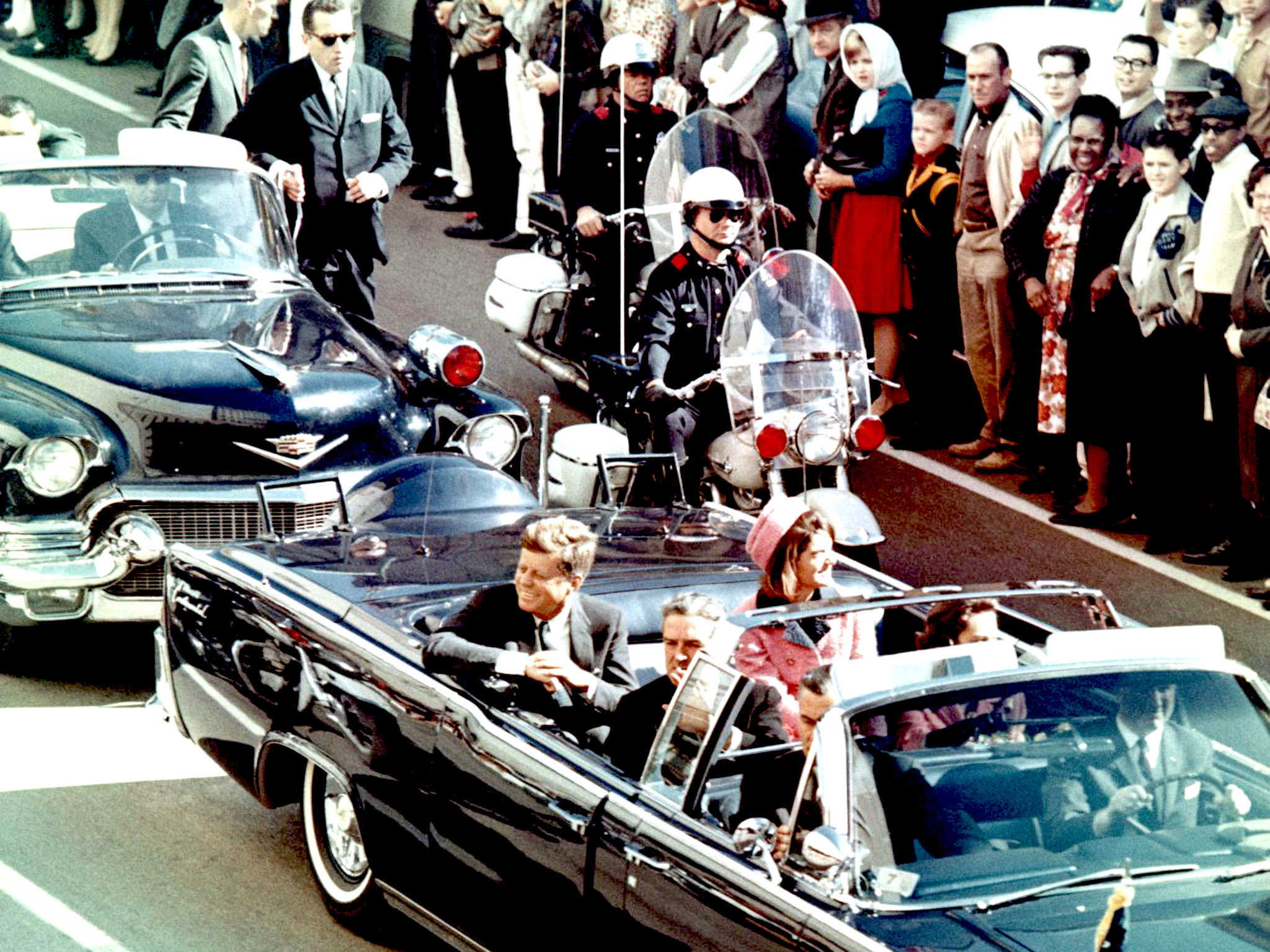
The
motocade, JFK and his wife Jacqueline ride in a limousine through
Dallas, Texas just moments before being assassinated.
John Fitzgerald Kennedy (May 29, 1917 – November 22, 1963), often referred to as JFK, was an American politician who served as the 35th president of the United States from 1961 until his assassination in 1963. He was the youngest person elected president. Kennedy served at the height of the Cold War, and the majority of his foreign policy concerned relations with the Soviet Union and Cuba. A Democrat, Kennedy represented Massachusetts in both houses of the United States Congress prior to his presidency.
Born into the prominent Kennedy family in Brookline, Massachusetts, Kennedy graduated from Harvard University in 1940, joining the U.S. Naval Reserve the following year. During
World War
II, he commanded PT boats in the Pacific theater. Kennedy's survival following the sinking of PT-109 and his rescue of his fellow sailors made him a war hero and earned the Navy and Marine Corps Medal, but left him with serious injuries. After a brief stint in journalism, Kennedy represented a working-class Boston district in the U.S. House of Representatives from 1947 to 1953. He was subsequently elected to the U.S. Senate, serving as the junior senator for Massachusetts from 1953 to 1960. While in the Senate, Kennedy published his book, Profiles in Courage, which won a Pulitzer Prize. Kennedy ran in the 1960 presidential election. His campaign gained momentum after the first televised presidential debates in American history, and he was elected president, narrowly defeating Republican opponent Richard Nixon, the incumbent vice president.

JFK
with the women is support of the Equalities Act
Kennedy's presidency saw high tensions with communist states in the Cold
War. He increased the number of American military advisers in South Vietnam, and the Strategic Hamlet Program began during his presidency. In 1961, he authorized attempts to overthrow the
Cuban government of Fidel Castro in the failed Bay of Pigs Invasion and Operation Mongoose. In October 1962, U.S. spy planes discovered Soviet missile bases had been deployed in
Cuba. The resulting period of tensions, termed the Cuban Missile Crisis, nearly resulted in nuclear war. In August 1961, after East German troops erected the Berlin Wall, Kennedy sent an army convoy to reassure West Berliners of U.S. support, and delivered one of his most famous speeches in West Berlin in June 1963. In 1963, Kennedy signed the first nuclear weapons treaty. He presided over the establishment of the Peace Corps, Alliance for Progress with Latin America, and the continuation of the Apollo program with the goal of landing a man on the
Moon before 1970. He supported the civil rights movement but was only somewhat successful in passing his New Frontier domestic policies.
On November 22, 1963, Kennedy was assassinated in Dallas. His vice president, Lyndon B. Johnson, assumed the presidency. Lee Harvey Oswald was arrested for the assassination, but he was shot and killed by Jack Ruby two days later. The
FBI and the Warren Commission both concluded Oswald had acted alone, but conspiracy theories about the assassination persist. After Kennedy's death, Congress enacted many of his proposals, including the Civil Rights Act of 1964 and the Revenue Act of 1964. Kennedy ranks highly in polls of U.S. presidents with historians and the general public. His personal life has been the focus of considerable sustained interest following public revelations in the 1970s of his chronic health ailments and extramarital affairs. Kennedy is the most recent U.S. president to have died in office.
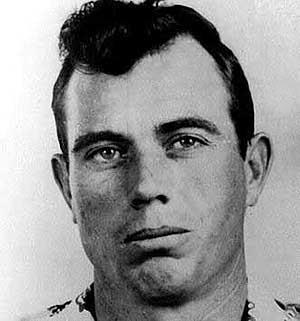
Police
officer J D Tippet who was shot by Lee Harvey Oswald in Dallas, Texas
J. D. Tippit (September 18, 1924 – November 22, 1963) was an American World War II U.S. Army veteran and Bronze Star recipient, who was a police officer with the Dallas Police Department for 11 years. On November 22, 1963, less than one hour after the assassination of President John F. Kennedy, Tippit was shot to death in a residential neighborhood in the Oak Cliff section of Dallas, Texas. Lee Harvey Oswald was initially arrested for the murder of Tippit and subsequently charged for killing Kennedy but was murdered by Jack Ruby before he could stand trial.
In 1964, the Warren Commission concluded that Tippit was murdered by Oswald and that Oswald was the sole perpetrator. The commission's findings remain controversial and has been both challenged by conspiracy theorists who dispute the commission's conclusions and supported by others.
On November 22, 1963, Tippit was working beat number 78, his normal patrol area in south Oak Cliff, a residential area of Dallas.
At 12:45 p.m., 15 minutes after President Kennedy was shot, Tippit received a radio order to drive to the central Oak Cliff area as part of a concentration of police around the center of the city. At 12:54, Tippit radioed that he had moved as directed. By then, several messages had been broadcast describing a suspect in the President's shooting at Dealey Plaza as a slender white male, in his early 30s, 5 ft 10 in (1.78 m) tall, and weighing about 165 lb (75 kg). Oswald was a slender white male, 24 years old, 5 ft 9 in (1.75 m) tall, and an estimated weight of 135 lb (61 kg) at autopsy. Tippit spoke his last known words, "10-4", over his police radio.

According to the Warren Commission, at approximately 1:11–1:14 p.m., Tippit was driving slowly eastward on East 10th Street — about 100 feet (30 m) past the intersection of 10th Street and Patton Avenue — when he pulled alongside a man who resembled the police description. Oswald walked over to Tippit's car and exchanged words with him through an open vent window. Tippit opened his car door and as he (Tippit) walked toward the front of the car, Oswald drew his handgun and fired four shots in rapid succession. Three bullets hit Tippit in the chest and as he lay to the ground, another shot hit his right temple, killing him instantly. Tippit's body was transported from the scene of the shooting by ambulance to Methodist Hospital, where he was pronounced dead at 1:25 p.m. by Dr. Richard A. Liguori.
A short time later, Hardy's shoe store manager Johnny Brewer observed Oswald acting suspiciously as police cars passed nearby with sirens blaring. Oswald then ducked into the Texas Theatre without purchasing a ticket. The police were notified by the theater's cashier and responded by surrounding the theater. Oswald was arrested after a brief struggle. Twelve people who witnessed the shooting or its aftermath were mentioned in the Warren Report.
Domingo Benavides saw Tippit standing by the left door of his parked police car, and a man standing on the right side of the car. He then heard three shots and saw Tippit fall to the ground. Benavides stopped his pickup truck on the opposite side of the street from Tippit's car. He observed the shooter fleeing the scene and removing two spent cartridge cases from his gun as he left.
Benavides waited in his truck until the gunman disappeared, and then "a few minutes" more, before assisting Tippit. He then tried, unsuccessfully, to use the radio in Tippit's car to report the shooting to police headquarters. Then another, unidentified person used the radio in the car and reported the shooting to a police operator for the first time. After that, Ted Callaway, who was Benavides' boss at the used car lot and a former Marine, used the radio and reported the shooting, hearing in response that the police already knew about it.
Callaway testified that he had seen the shooter with the gun "in a raised pistol position", and shouted at him, but what the shooter responded was unintelligible. Helen Markham witnessed the shooting and then saw a man with a gun in his hand leave the scene. Markham identified Oswald as Tippit's killer in a police lineup she viewed that evening.
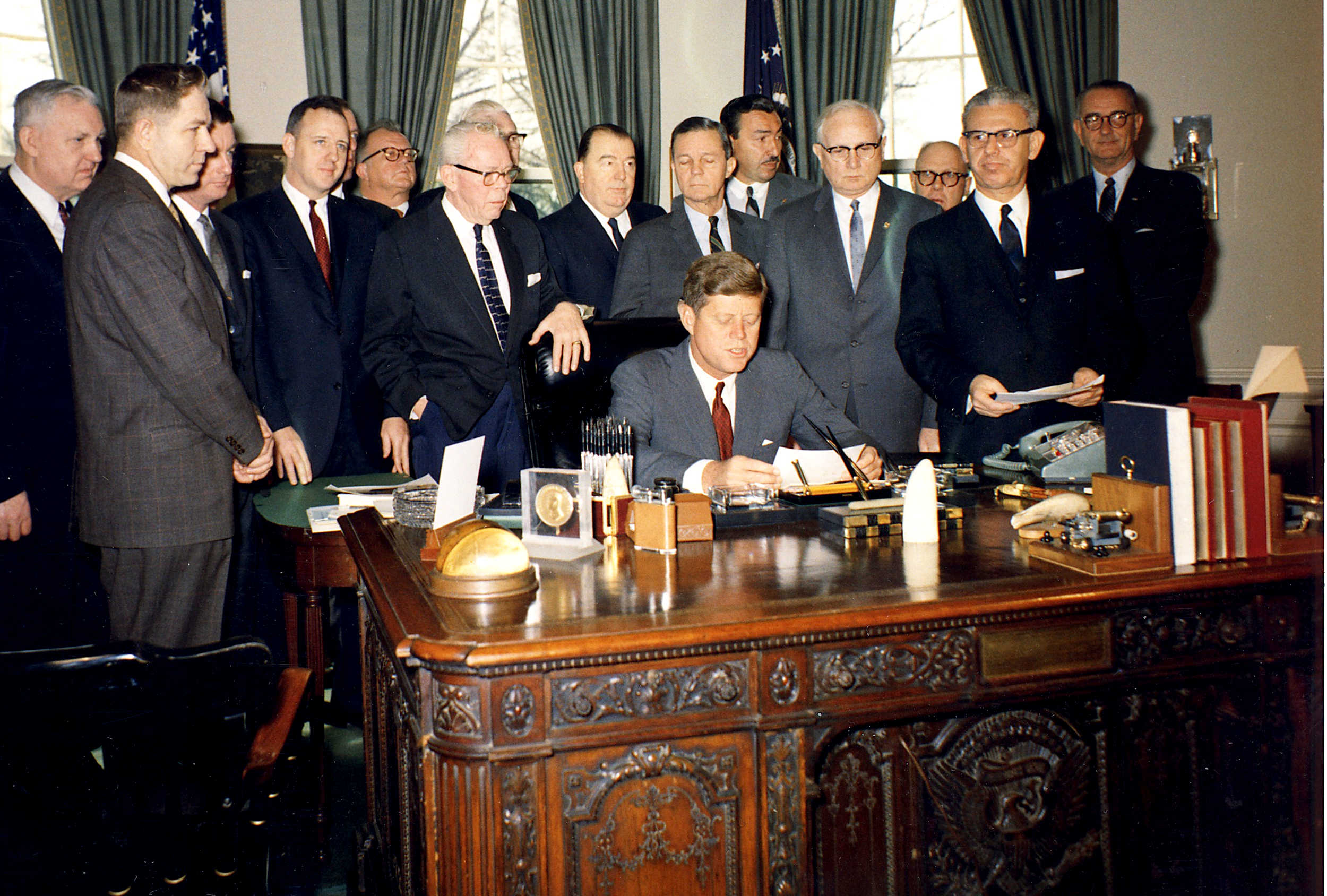
JFK
- Manpower Development and Training Act
Barbara Davis and her sister-in-law Virginia Davis heard the shots and saw a man crossing their lawn, shaking his revolver, as if he were emptying it of cartridge cases. Later, the women found two cartridge cases near the crime scene and handed the cases over to police. Two other cartridge cases were handed to a policeman by Benavides. That evening, Barbara Davis and Virginia Davis were taken to a lineup and both Davises picked out Oswald as the man whom they had seen.
Taxicab driver William Scoggins testified that he was sitting nearby in his cab when he saw Tippit's police car pull up alongside a man on the sidewalk. Scoggins heard three or four shots and then saw Tippit fall to the ground. As Scoggins crouched behind his cab, the man passed within 12 feet of him, pistol in hand, muttering what sounded to him like, "poor dumb cop" or "poor damn cop." The next day, Scoggins viewed a police lineup and identified Oswald as the man whom he had seen with the pistol.
The Commission also named several other witnesses who were not at the scene of the murder, but who identified Oswald running between the murder scene and the Texas Theatre, where Oswald was subsequently arrested.
It was the unanimous testimony of expert witnesses before the Warren Commission that these spent cartridge cases were fired from the revolver in Oswald's possession to the exclusion of all other weapons.
Out of the four bullets recovered from Tippit's body, only one (according to Nicol) or none (according to Cunningham) could be positively identified as having been fired from Oswald's revolver; the others "could have" been fired from that revolver, but there was no certain match. When the revolver was test-fired by the FBI, it was reported that it was leaving inconsistent microscopic markings on the bullets, i.e. two consecutive bullets fired from it could not be matched to each other. This was because the revolver had been rechambered for .38 Special but not rebarreled for .38 Special, so the bullets were slightly undersized compared to the barrel, making their passage through the barrel "erratic".
On the evening of the assassination, both Attorney General Robert F. Kennedy and the new President, Lyndon B. Johnson, called Tippit's widow to express their sympathies. Jacqueline Kennedy wrote a letter expressing sorrow for the bond they shared. The plight of Tippit's family also moved much of the nation and a total of $647,579 was donated to them, equivalent to $6,444,819 in 2023, following the
assassination. One of the largest individual gifts was $25,000 that Dallas businessman Abraham Zapruder donated to Marie Tippit after selling his film of the president's assassination to Life magazine.
A televised funeral service for Tippit was held on November 25, 1963, at the Beckley Hills Baptist Church, attended by about 2,000 people, at least 800 of them police colleagues. Police outriders attended the hearse on its way to the burial at the newly established Memorial Court of Honor at the Laurel Land Memorial Park in Dallas. His funeral was held on the same day as those of both Kennedy and Oswald.
In January 1964, Tippit was posthumously awarded the Medal of Valor from the American Police Hall of Fame, and he also received the Police Medal of Honor, the Police Cross, and the Citizens Traffic Commission Award of Heroism. A state historical marker memorializing Tippit was unveiled November 20, 2012, at the location where the shooting occurred.
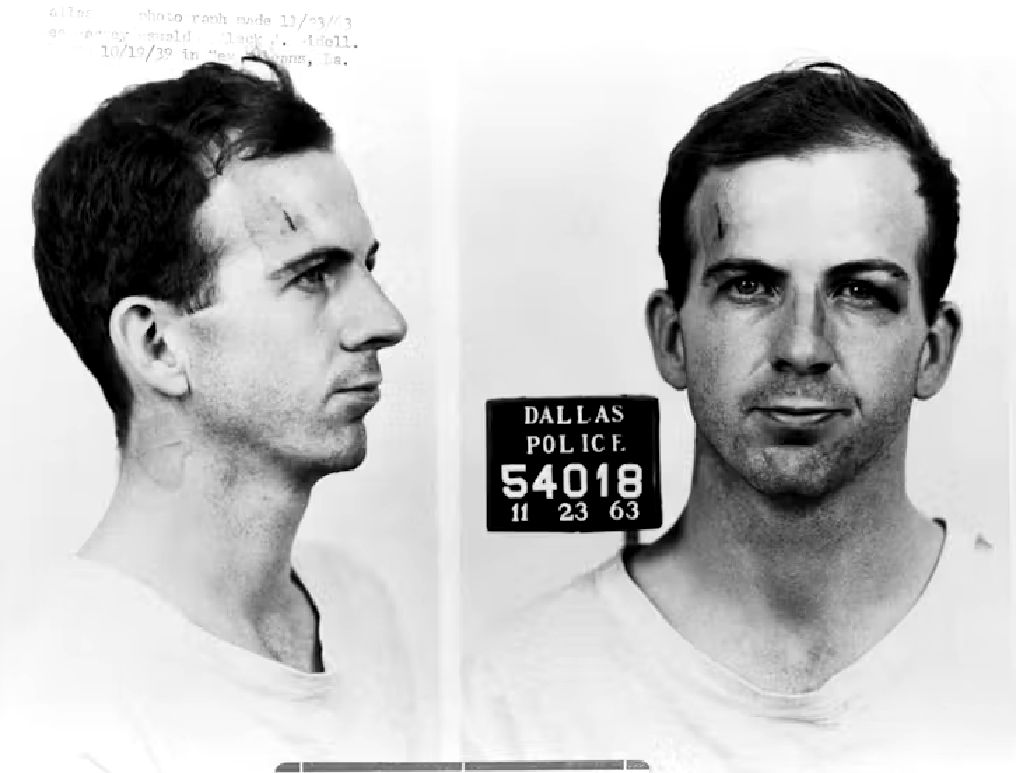
Police
mugshot of Lee Harvey Oswald after shooting officer J D Tippet in
Dallas, Texas
Jack Leon Ruby (born Jacob Leon Rubenstein; c. March 25, 1911 – January 3, 1967) was an American nightclub owner who murdered Lee Harvey Oswald on November 24, 1963, two days after Oswald was accused of the assassination of President John F. Kennedy. Ruby shot and mortally wounded Oswald on live television in the basement of Dallas Police Headquarters and was immediately arrested. In a trial, Ruby was found guilty and sentenced to death. Ruby's conviction and death sentence were overturned on appeal, and he was granted a new trial, but he became ill, was diagnosed with cancer, and died of a pulmonary embolism on January 3, 1967.
In 1964, the Warren Commission concluded that Ruby acted alone in killing Oswald and that Ruby shot Oswald on impulse and in retaliation for the Kennedy assassination. The commission's findings are challenged by various critics who hypothesize that Ruby was part of a conspiracy surrounding the Kennedy assassination.
According to people interviewed by law enforcement and the Warren Commission, Ruby was desperate to attract attention to himself and to his club. He knew a great number of people in Dallas, but he had only a few friends. Because his business ventures remained unsuccessful, he was heavily in debt.
The commission received reports of Ruby's penchant for violence. He had a volatile temper, and he often resorted to violence with employees who had upset him. He acted as the bouncer of his own club and beat his customers on at least 25 occasions. The fights would often end with Ruby throwing his victims down the club's stairs. In one fight with a man, the man bit Ruby's left index finger so badly that the doctors had it amputated.
According to the Warren Commission, on November 22, Ruby was in the second-floor advertising offices of the Dallas Morning News, five blocks away from the Texas School Book Depository, placing weekly advertisements for his nightclubs when he learned of the assassination around 12:45 p.m. According to witnesses, Ruby was visibly shaken. Ruby then made phone calls to his assistant at the Carousel Club and to his sister. The Commission stated that an employee of the Dallas Morning News estimated that Ruby left the newspaper's offices at 1:30 p.m., but indicated that other testimony suggested that he had left earlier. According to the Warren Commission, Ruby arrived back at the Carousel Club shortly before 1:45 p.m. to notify employees that the club would be closed that evening.
John Newnam, an employee at the newspaper's advertisement department, testified that Ruby became upset over an anti-Kennedy ad published in the Morning News that was signed by "The American Fact-Finding Committee, Bernard Weissman, Chairman." Ruby was sensitive to antisemitism and was distressed that an ad attacking the President was signed by a person with a "Jewish name." Early the next morning, Ruby noticed a political billboard featuring the text "IMPEACH EARL WARREN" in block letters. Ruby's sister Eva testified that Ruby had told her that he believed that the anti-Kennedy ad and the anti-Warren sign were connected and were a plot by a "gentile" to blame the assassination on the Jews.
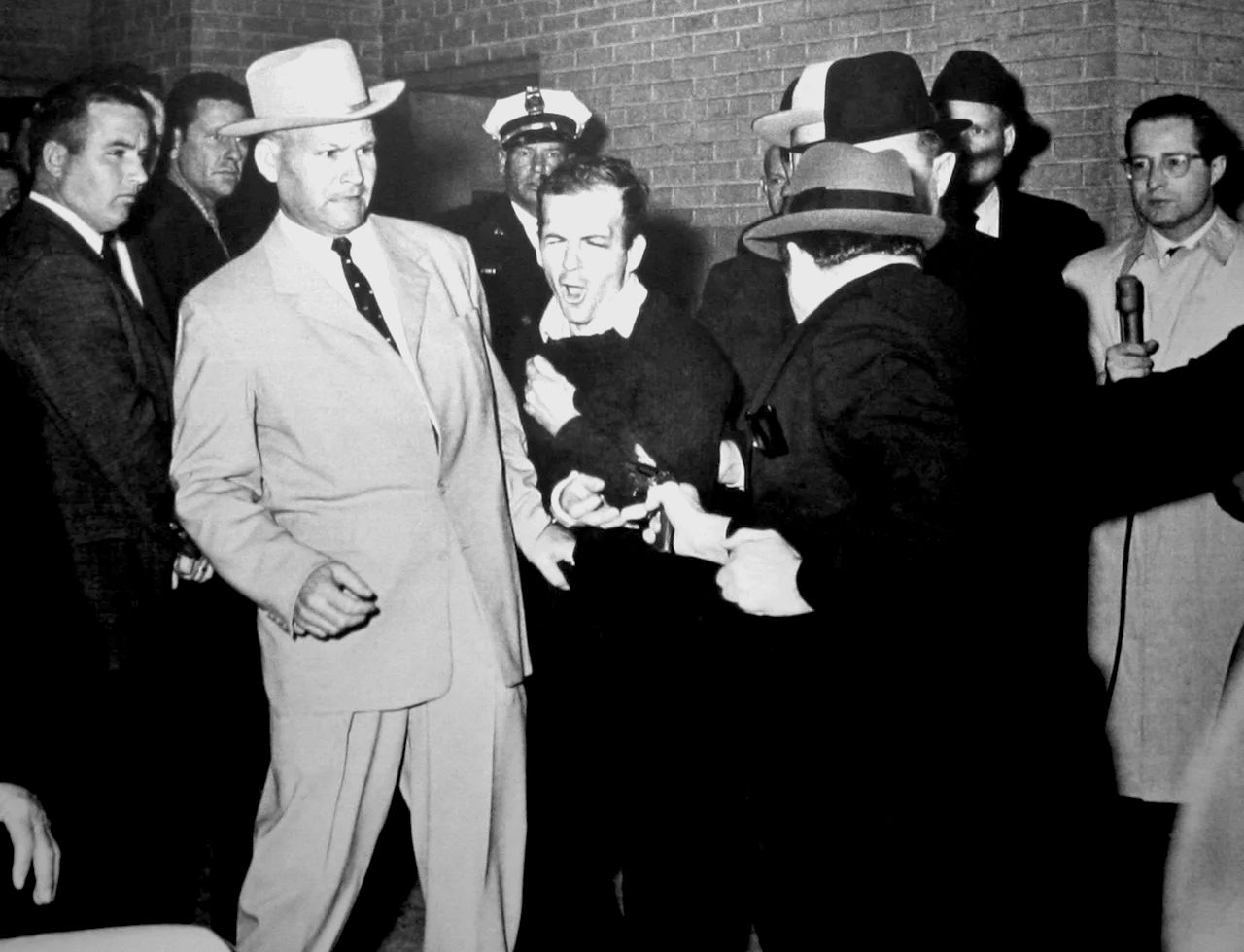
Police
station in Dallas, Jack Ruby shoots Lee Harvey Oswald on live television
Ruby was seen in the halls of the Dallas Police Headquarters on several occasions after Oswald's arrest for the murder of Dallas policeman J. D. Tippit. He was present at an arranged press meeting with Oswald. A reporter asked Oswald, "Did you kill the President?" and Oswald answered, "No, I have not been charged with that. In fact, nobody has said that to me yet. The first thing I heard about it was when the newspaper reporters in the hall asked me that question." Another reporter told Oswald that he had been charged and Oswald reacted with a look of astonishment. Newsreel footage from WFAA-TV (Dallas) and NBC shows that Ruby impersonated a newspaper reporter during a press conference held by District Attorney Henry Wade at Dallas Police Headquarters that night. Wade briefed reporters that Oswald was a member of the anti-Castro Free Cuba Committee. Ruby was one of several people there who spoke up to correct Wade, saying, "Henry, that's the Fair Play for Cuba Committee", a pro-Castro organization. Ruby later told the FBI that he had his .38 Colt Cobra revolver in his right pocket during the press conference.
On November 24, Ruby drove into town with his pet dachshund Sheba to send an emergency money order at the Western Union on Main Street to one of his employees. The time stamp was 11:17 a.m. for the transaction. Ruby then walked half a block to the Dallas police headquarters, where he made his way into the basement.
At 11:21 a.m. CST, Oswald was being escorted by Dallas police Detectives Jim Leavelle and L. C. Graves through the police basement to an armored car that was to take him to the nearby county jail, when Ruby emerged from a crowd of reporters with his
revolver aimed at Oswald's abdomen and shot him at point blank range, mortally wounding him. Oswald screamed "Oh!" in pain and his hands clutched at his stomach as he slumped to the floor, moaning. Police detective Billy Combest, who knew Ruby, exclaimed, "Jack, you son of a bitch!" The armored car had rolled down the ramp at the moment Ruby emerged and slightly hit Ruby's leg almost immediately after he fired, causing him to almost lose balance as he was immediately subdued by police while Oswald was carried back into the basement level jail office. Combest asked Oswald, "Do you have anything you want to tell us now?" Oswald shook his head.
Drifting in and out of consciousness, Oswald was placed onto an ambulance and was driven to Parkland Memorial Hospital, the same hospital where President Kennedy had died two days earlier. Leavelle and Graves along with Frederick Bieberdorf, a medical student on duty, rode in the ambulance. Bieberdorf said that several blocks before reaching the hospital, Oswald started thrashing about, resisting Beiberdorf's efforts of heart massage and attempting to free an
oxygen mask over his mouth. At Parkland, Oswald was treated by the same surgeons who had tried to save Kennedy; they subsequently determined Ruby's bullet had entered Oswald's left side in the front part of the abdomen and caused extensive damage to his spleen, stomach, aorta, vena cava, kidney, liver, diaphragm, and eleventh rib before coming to rest on his right side. Oswald died at 1:07 pm.
A network television pool camera was broadcasting live to cover Oswald's transfer; millions of people watching on NBC saw the shooting as it happened and on other networks within minutes afterward. Several photographs were taken of the event, capturing the moments around when Ruby pulled the trigger. In 1964, Robert H. Jackson of the Dallas Times Herald was awarded the Pulitzer Prize for Photography for his image, titled Jack Ruby Shoots Lee Harvey Oswald.
Great indignation was directed towards Ruby's murder of Oswald. Many felt that the killing had robbed the nation of essential information and left key questions unanswered. Former Vice President Richard Nixon said, "(Oswald was) also entitled to a trial ... two wrongs don't make a right." Oswald's murder compounded initial suspicions that the Kennedy assassination was part of a larger plot.
Not all were shocked, however. The crowd outside the headquarters burst into applause when they heard that Oswald had been shot. In Dallas and elsewhere in the nation, Oswald was hated in death, and Ruby was viewed as a hero by some citizens. During his time in jail, he received many letters from the public, often praising him for his actions.
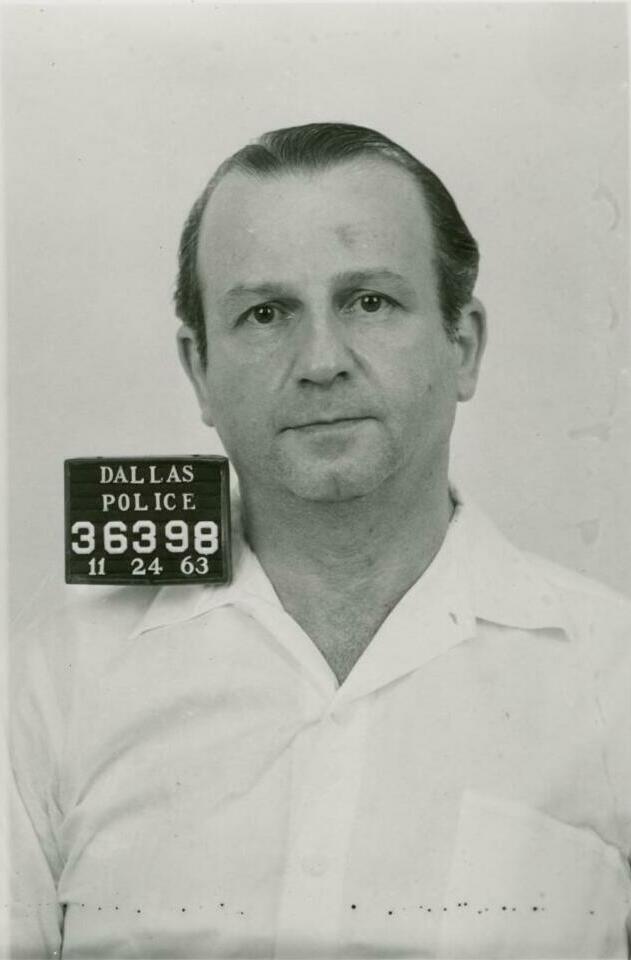
Night
club owner Jack Ruby, the man who shoot Lee Harvey Oswald
AFFAIRS OF STATE
Kennedy was single in the 1940s while having relationships with Danish journalist Inga Arvad and actress Gene Tierney. During his time as a senator, he had an affair with Gunilla von Post, who later wrote that the future president tried to end his marriage to be with her before having any children with his wife. Kennedy was also reported to have had affairs with
Marilyn
Monroe, Judith Campbell, Mary Pinchot Meyer, Marlene Dietrich, White House intern Mimi Alford, and his wife's press secretary, Pamela Turnure.

Gene
Tierney - affairs of state - Hollywood actress
The full extent of Kennedy's relationship with Monroe (who in 1962 famously sang "Happy Birthday, Mr. President" at Kennedy's birthday celebration at Madison Square Garden) is not known, though it has been reported that they spent a weekend together in March 1962 while he was staying at Bing Crosby's house. Furthermore, people at the White House switchboard noted that Monroe had called Kennedy during 1962.

J. Edgar Hoover, the FBI
director, received reports about Kennedy's indiscretions. These included an alleged East German spy, Ellen Rometsch. According to historian Michael Beschloss, in July 1963, Hoover reportedly informed Robert Kennedy about the affair with a woman "suspected as a Soviet intelligence agent, someone linked to East German intelligence." Robert Kennedy reportedly took the matter sufficiently seriously to raise it with leading Democratic and Republican figures in Congress. Former Secret Service agent Larry Newman recalled "morale problems" that the president's indiscretions engendered within the Secret Service.
Kennedy inspired affection and loyalty from the members of his team and his supporters. According to Reeves, this included "the logistics of Kennedy's liaisons ... [which] required secrecy and devotion rare in the annals of the energetic service demanded by successful politicians." Kennedy believed that his friendly relationship with members of the press would help protect him from public revelations about his sex life.
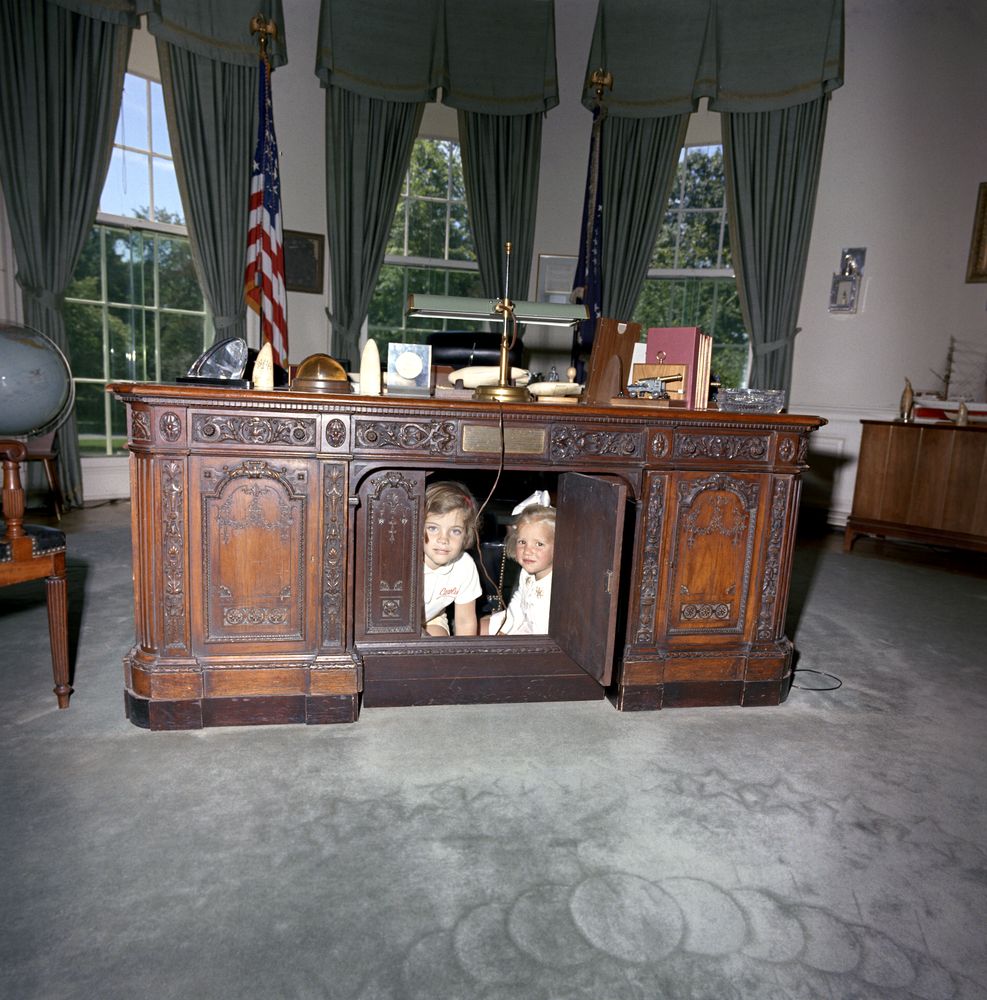
The
Resolute desk in the Oval Office - Caroline and Kerry Kennedy. These
desks, of which there are two, one in London, England, they are featured
in National Treasure 2 starring Nicholas
Cage.
CONSPIRACY THEORIES
Some conspiracy theorists have alleged that the murder of Tippit was part of a conspiracy to kill Kennedy, implying that two murders could not have happened so closely together by coincidence. Warren Commission attorney David Belin referred to Tippit's killing as the "Rosetta Stone to the JFK assassination". Other conspiracy theorists suggest that Tippit's murder was unconnected to the assassination.
Some conspiracy theorists dispute that Oswald shot Tippit, alleging that the physical evidence and witness testimony do not support that conclusion. New Orleans district attorney Jim Garrison, who investigated the assassination of John F. Kennedy and brought evidence in his 1969 trial of businessman Clay Shaw, contended in his book On the Trail of the Assassins that the witness testimony and handling of evidence in the Tippit murder was flawed and that it was doubtful that Oswald was the killer or even at the scene of the crime. According to Garrison, numerous witnesses who were not interviewed by the Warren Commission reported seeing two men fleeing the scene of Tippit's murder.
Garrison claimed that Helen Markham, the Warren Commission's star witness, expressed uncertainty as to her identification of Oswald in the police lineup. Garrison claimed that bullets recovered from Tippit's body were from two different manufacturers, as the Warren Commission stated, and the gun found on Oswald at his arrest did not match the cartridges found at the scene. Garrison accused the Dallas Police Department of mishandling the evidence and of possibly firing Oswald's revolver to produce bullet cartridges for the FBI to link to his gun.
Other conspiracy theorists allege that Tippit himself was a conspirator, tasked to kill Oswald by organized crime or right-wing politicians in order to cover up the search for other assassins.
The identical plot was used in the film "Shooter" from 2007. Except it was not the
US President who was the target, but the
fictional Ethiopian Archbishop Desmond Mutumbo,
who is killed, and the location is changed.
MEXICO
But speculation about Kennedy’s Nov. 22, 1963 murder in Dallas continues, fueled by unreleased classified documents, bizarre ballistics and the claim of assassin Lee Harvey Oswald – who was later killed on live TV while in police custody – that he was “just a patsy.”
Several JFK assassination experts, like the former New York Times investigative reporter Phillip Shenon, see Mexico as the best place to find answers regarding a possible conspiracy and who was behind it.
Just over a month before Kennedy’s killing, Oswald took a bus from Texas to Mexico City. He arrived Friday morning, Sept. 27, 1963 and left very early on Wednesday, Oct. 2, according to American and Mexican intelligence.
Was Oswald a kind of rogue James Bond who went south of the border to consort with communists, Cuban revolutionaries and spies – or just a deranged killer?
I dug into that question while researching my book on conspiracy narratives in Mexico, and I think I found something everybody else missed: a hole in the story of the very man who started a tenacious conspiracy theory about Oswald’s Mexico trip.
COMMUNIST CITY
Mexico was a Cold War hot spot in the mid-20th century, a haven for Soviet exiles, American leftists fleeing the anti-communist persecution of McCarthyism and sympathizers with Cuba’s Castro regime. Every communist and democratic country had an embassy in Mexico City – the only place in the Western Hemisphere where these enemies coexisted more or less openly.
According to witnesses from the Cuban and Soviet diplomatic missions, Oswald visited their embassies repeatedly on Friday and Saturday. He was desperately seeking visas to those countries, which Americans were then prohibited from visiting.
Told such documents would take months to process, Oswald got in a heated argument with the Cuban consul, Emilio Azcué. Oswald also forced a KGB volleyball match on Saturday morning to be canceled when he brandished a weapon at the Soviet consulate, before bursting into tears and leaving.
Those events are well documented by the CIA, which in the 1960s had ramped up its Mexico operations to monitor communist activity, even hiring 200 Mexican agents to help. The Mexican Secret Service, whose 1960s-era files Mexico has recently begun to declassify, also tracked Oswald on Sept. 27 and Sept. 28, 1963.
Oswald’s whereabouts for the next three-and-a-half days, however, remain unknown.
A CONSPIRACY THEORY IS BORN
A main conspiracy about Oswald’s undocumented time in Mexico City puts him in contact with dangerous Mexicans on the left side of the Cold War.
This story originated in March 1967, when the American consul in the Mexican coastal city of Tampico, Benjamin Ruyle, was buying drinks for local journalists.
One of them – Óscar Contreras Lartigue, a 28-year-old reporter for El Sol de Tampico – told Ruyle he’d met Oswald in 1963 when he was a law student at Mexico’s National Autonomous University.
Contreras said he’d been in a pro-Castro campus group and that Oswald had begged this group for help getting a Cuban visa. According to Contreras, Oswald spent two days with these National Autonomous University students, then met up with them again a few days later at the Cuban Embassy.
Evidently afraid for his life, Contreras wouldn’t tell Ruyle much more. He said he himself had traveled to Cuba, knew people in the Castro regime and had blown up the statue of a former Mexican president on campus in Mexico City. Contreras feared persecution for his political activities.
Contreras did say this wasn’t the first time he was sharing his story, though. After JFK was shot, Contreras told Ruyle, he’d commented to his editor that he’d recently met Oswald.

They
knew Kennedy liked his motorcades. One sure way of getting election
results, but a bit risky if policies are hurting any serious hitters.
OSCAR CONTRERAS LARTIGUE
Contreras’ account hinted at suspicious, previously unknown connections between Oswald and communist Cuba made shortly before JFK’s assassination.
His story was, according to a memo later sent from CIA headquarters, “the first solid investigative lead we have on Oswald’s activities in Mexico.” U.S. government officials needed to find out if Contreras was a trustworthy source.
Three months after Ruyle’s happy hour, a CIA official from Mexico City went to Tampico to question Contreras. During the six-hour interrogation, Contreras still refused to go into details, but he did say Oswald never mentioned assassination – only that he said repeatedly he “had to get to Cuba.”
In 1978, a researcher from the U.S. House Select Commission on Assassinations named Dan Hardway went to Mexico to investigate the JFK assassination. He was unable to interview Contreras despite several attempts, but in an influential report warned his account should not be dismissed.
The New York Times reporter Shenon, who interviewed Oscar Contreras for a 2013 book on the JFK assassination, also found Contreras credible. Shenon wrote that Contreras – whom he calls a “prominent journalist” – “went much further” in their interview than he had with the
CIA, alleging “far more extensive contacts between Oswald and Cuban agents in Mexico.”
Dan Hardway, who is now a lawyer in West Virginia, still believes Contreras. After reading Shenon’s book, he reiterated in 2015 that Lee Harvey Oswald might have been part of a wider Cuban intelligence web.
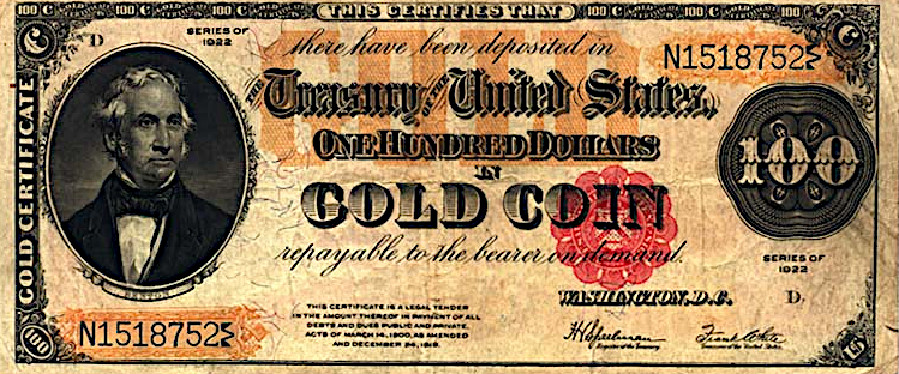
"We have gold because we cannot trust governments," President Herbert Hoover famously said in 1933 in his statement to Franklin D. Roosevelt. The Emergency Banking Act, forced all Americans to convert their gold coins, bullion, and certificates into U.S. dollars, to stop the outflow of gold reserves during the Great Depression. The writing was on the wall, but nobody could read it.
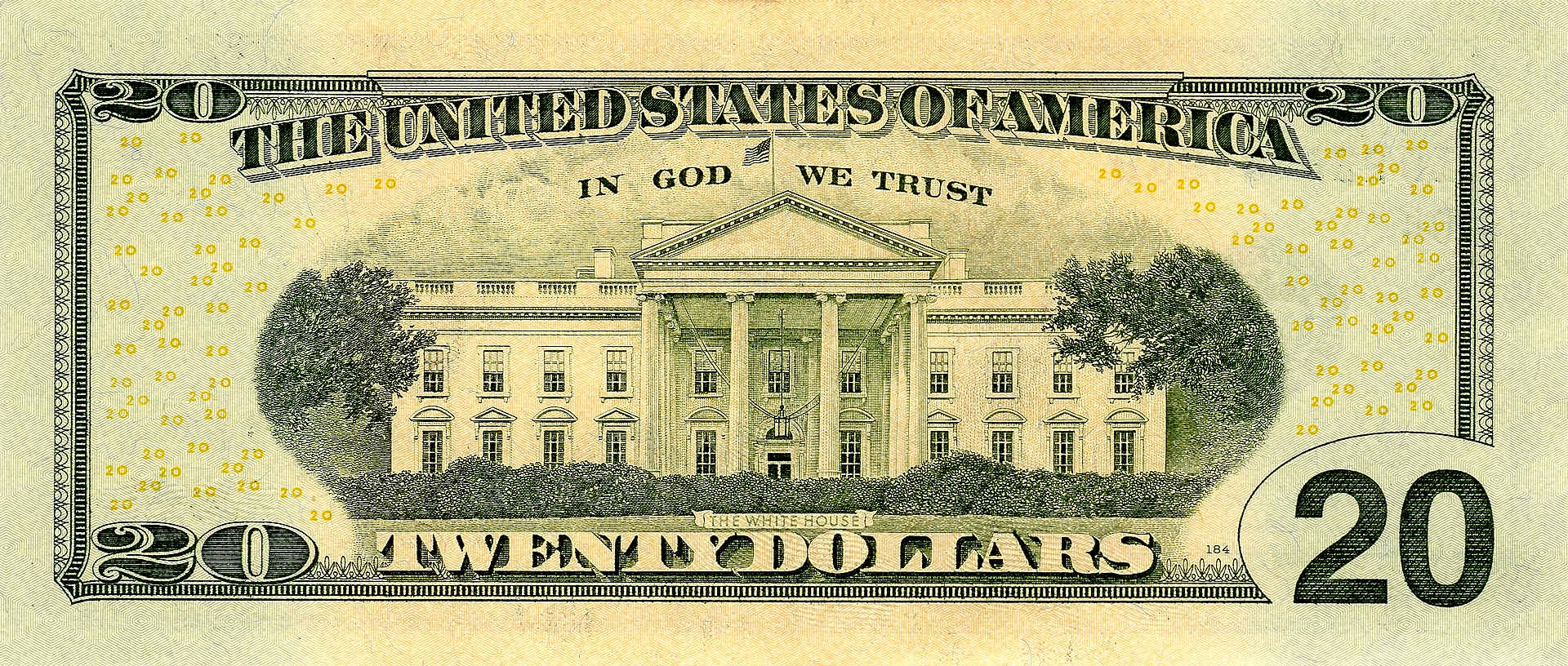
A
$20 dollar bill showing the White House on the reverse
|
-
|
-
|
-
|
-
|
|
1
|
George
Washington
|
1789 to 1797
|
Independent
|
|
2
|
John
Adams
|
1797 to 1801
|
Federalist
|
|
3
|
Thomas
Jefferson
|
1801 to 1809
|
Democratic-Republican
|
|
4
|
James
Madison
|
1809
to 1817
|
Democratic-Republican
|
|
5
|
James
Monroe
|
1817
to 1825
|
Democratic-Republican
|
|
6
|
John
Quincy Adams
|
1825
to 1829
|
Democratic-Republican
|
|
7
|
Andrew
Jackson
|
1829
to 1837 (attempted assas.)
|
Democratic
|
|
8
|
Martin
Van Buren
|
1837
to 1841
|
Democratic
|
|
9
|
William
H. Harrison
|
March 4 to April
4 1841
|
Whig
|
|
10
|
John
Tyler
|
1841
to 1845
|
Independent
|
|
11
|
James
K. Polk
|
1845
to 1849
|
Democratic
|
|
12
|
Zachary
Taylor
|
1849
to 1850
|
Whig
|
|
13
|
Millard
Fillmore
|
1850
to 1853
|
Whig
|
|
14
|
Franklin
Pierce
|
1853
to 1857
|
Democratic
|
|
15
|
James
Buchanan
|
1857
to 1861
|
Democratic
|
|
16
|
Abraham
Lincoln
|
1861 to 1865
(assassinated)
|
Republican
|
|
17
|
Andrew
Johnson
|
1865
to 1869
|
National
Union
|
|
18
|
Ulysses
S. Grant
|
1869
to 1877
|
Republican
|
|
19
|
Rutherford
B. Hayes
|
1877
to 1881
|
Republican
|
|
20
|
James
A. Garfield
|
1881
(assassinated)
|
Republican
|
|
21
|
Chester
A. Arthur
|
1881
to 1885
|
Republican
|
|
22
|
Grover
Cleveland
|
1885
to 1889
|
Democratic
|
|
23
|
Benjamin
Harrison
|
1889
to 1893
|
Republican
|
|
24
|
Grover
Cleveland
|
1893
to 1897
|
Democratic
|
|
25
|
William
McKinley
|
1897
to 1901 (assassinated)
|
Republican
|
|
26
|
Theodore
Roosevelt
|
1901
to 1909
|
Republican
|
|
27
|
William
H. Taft
|
1909
to 1913
|
Republican
|
|
28
|
Woodrow
Wilson
|
1913
to 1921
|
Democratic
|
|
29
|
Warren
G. Harding
|
1921
to 1923
|
Republican
|
|
30
|
Calvin
Coolidge
|
1923
to 1929
|
Republican
|
|
31
|
Herbert
Hoover
|
1929
to 1933
|
Republican
|
|
32
|
Franklin
D. Roosevelt
|
1933
to 1945
|
Democratic
|
|
33
|
Harry
S. Truman
|
1945
to 1953
|
Democratic
|
|
34
|
Dwight
D. Eisenhower
|
1953
to 1961
|
Republican
|
|
35
|
John
F. Kennedy
|
1961
to 1963 (assassinated)
|
Democratic
|
|
36
|
Lyndon
B. Johnson
|
1963
to 1969
|
Democratic
|
|
37
|
Richard
Nixon
|
1969
to 1974
|
Republican
|
|
38
|
Gerald
Ford
|
1974
to 1977
|
Republican
|
|
39
|
Jimmy
Carter
|
1977
to 1981
|
Democratic
|
|
40
|
Ronald
Reagan
|
1981
to 1989 (shot rib)
|
Republican
|
|
41
|
George
H. W. Bush
|
1989
to 1993
|
Republican
|
|
42
|
Bill
Clinton
|
1993
to 2001
|
Democratic
|
|
43
|
George
W. Bush
|
2001
to 2009
|
Republican
|
|
44
|
Barack
Obama
|
2009 to 2017
|
Democratic
|
|
45
|
Donald
Trump
|
2017 to 2021
(shot ear)
|
Republican
|
|
46
|
Joe
Biden
|
2021
- 2024
|
Democratic
|
|
47
|
Election
due (Harris v Trump)
|
2024
- November
|
-
|
WORLD
WAR THREE
In
the event of an international nuclear holocaust, World
War Three will wipe out the White House and most of
Washington
DC. The same for most capital cities in every country around the
world. Imagine all the works of art and archaeological heritage sites
that will be erased from the history of our civilization. The only
intelligent life in the Universe at this time. We must do all we can to
prevent that from happening. That means all nations working together, to
help each other balance their books and resolve differences. We must
treat our neighbor's problems as our own. To reach an informed
understanding and agreement on a way to a sustainable future for
generations to come. Failing which, the tinderbox of unreasonableness,
is sure to ignite. Please let us all try to work together.
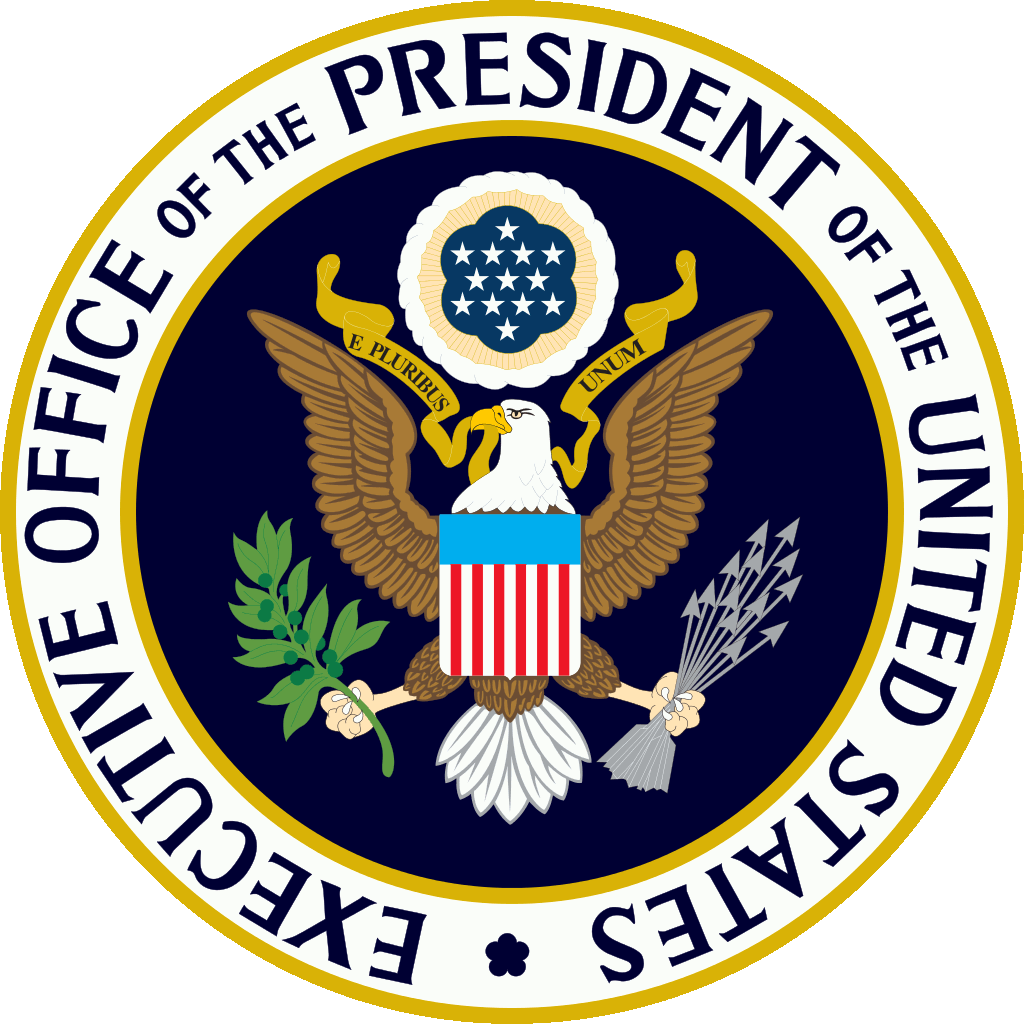
CHAPTERS
| CHARACTERS
| MEDIA
|
MOVIE REF |
SCREENPLAYS
|















